History & Revival of Mixed Martial Arts (MMA) in Today’s Sporting World
Taking it to the ground with Mixed Martial Arts
By: Victoria Chau, Staff Writer
Self-discipline, confidence, determination, and technique are four words associated with all sports. Add into that mixture ground-and-pound, no-holds-barred, submission, tap out, sleeper hold and taking-it-to-the-floor, and we’re talking about the increasingly popular sport of mixed martial arts, better known by its acronym MMA.
MMA has seen a re-emergence through an exploding fan base that truly started in the beginning of the 1990s, but can claim roots back to Ancient Greece. Despite being an extremely old sport, it has been the topic of heated debates. Its critics claim that it is simply too dangerous and promotes a “desensitization to violence.”
MMA advocates and practitioners refute this claim. They invite critics to better educate themselves about the sport to see that it is all about controlling the environment that MMA is practiced in. But before we get into the bashing and praise that MMA has received over the last decade, let’s rewind and see where it all started.
THE HISTORY OF MIXED MARTIAL ARTS
Rewind: 648 BCE in Ancient Greece
In 648 BCE, the Ancient Greeks decided to introduce what they called the sport of Pankration. This sport is the combination of two words: pan meaning ‘all’, and kratos meaning ‘powers.’ So put together, the sport was ‘all powers.’ This meant that Pankration was a mixture of boxing and wrestling that had only two rules: no eye gouging and no biting. To make it more interesting, the Greeks had the fights take place in a ring that was usually 12 to 14 feet across to encourage close-quarter combat. These bouts would end only when one participant was knocked unconscious or ‘submitted’ by raising his hand. Naturally, a referee was involved.
Sounding familiar yet?
Those that participated in the sports were called Pankratiasts and were often the heroes of Greek myths and legends. Even Hercules himself was said to have been a Pankratiast. Alas, with the rise of the Roman Empire also came the decline of Pankration, which was shoved aside for other combat sports. In the West, wrestling and boxing eventually became the more popular of combat sports and in the East (more specifically East Asia) the traditional martial arts flourished.
Rewind: 1925 in Brazil
To bridge the gap between 648 BCE and today, we have to take another trip and take a look at what was happening in Brazil at the turn of the 20th century. More specifically, we’re honing in on Brazil’s legendary Gracie family, who can be accredited with MMA’s modern-day re-emergence.
Gastão Gracie, a political figure in Brazil at this time, met with Mitsuyo Maeda, a Japanese Martial Arts Champion. The two struck a deal of sorts, which included political support. Since Japan wanted to create a colony in Brazil, Maeda ended up teaching the oldest of Gastão Gracie’s sons, Carlos Gracie, the traditional martial art of jiu-jitsu.
Carlos in turn taught his three younger brothers (Helio, Jorge and Gastão Jr.) what he learned. When Mitsuyo Maeda eventually left the country, the four Gracie brothers decided to shirk the rigid rules of traditional Japanese martial arts and instead adapt the jiu-jitsu they learned to better fit their needs and increase its practicality. In 1925, Carlos and Helio opened a jiu-jitsu academy in Rio de Janeiro.
To increase interest and gain public attention, the two brothers issued what has come to be known as the Gracie Challenge. This was a simple ad in the local newspaper that included a picture of Carlos (who was the smaller of the two brothers), information about the academy, and a challenge that stated, “If you want a broken arm or rib, contact Carlos Gracie at this number.”
[pullquote]It’s estimated that Canada’s MMA fan base is some 6 million people (18%), and Canadian interest in the sport actually exceeds that of the US.[/pullquote]
The ad served its purpose. Martial arts enthusiasts and champions flocked to the Gracie jiu-jitsu academy to participate in the challenge. The sons of Carlos and Helio also began to participate in what became known as ‘vale tudo’ matches, which is Portuguese for ‘anything goes’ or ‘no rules.’ Popularity increased to the point where they began to be held in Brazilian soccer stadiums to appease all the spectators.
Modern day MMA in North America
What really brings us to modern day MMA fighting began in 1980 when Helio’s oldest son, Rorion, came to the United States to teach what is now known as Brazilian (or Gracie) Jiu-Jitsu in California. Once again, Rorion issued the Gracie Challenge, but brought it to another level by offering $100,000 to anyone who could defeat him or his brothers in a vale tudo match. These Gracie Challenge matches increased the popularity of Brazilian Jiu-Jitsu and fighting with, more or less, no rules.
Rorion eventually decided to create an organization that would bring this type of fighting all over the United States. To fulfill this desire, Rorion Gracie met with Art Davie (a salesman who became interested in MMA from underground fights he saw in Thailand), who managed to set up a meeting for the two of them with the president of Semaphore Entertainment Group (SEG), Bob Meyrowitz. SEG was a company that specialized in providing live, pay-per-view sporting events. In 1993, the Ultimate Fighting Championship was born.
AN OCTAGON IS BORN
Ultimate Fighting Championship (UFC)
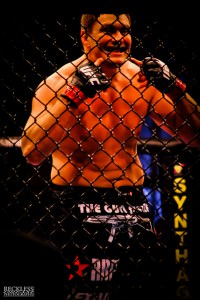 The UFC’s first event was held in 1993 and offered viewers a no-holds-barred (NHB) style of fighting with very few rules. Unlike today’s UFC, the first few UFC fights had no weight classes, time limits, rounds, or even mandatory safety equipment. It was literally a free-for-all. The only rules were no eye gouging, biting or fish hooks in fights that could end only through a referee stepping in, a knockout, or a submission by tapping out.
The UFC’s first event was held in 1993 and offered viewers a no-holds-barred (NHB) style of fighting with very few rules. Unlike today’s UFC, the first few UFC fights had no weight classes, time limits, rounds, or even mandatory safety equipment. It was literally a free-for-all. The only rules were no eye gouging, biting or fish hooks in fights that could end only through a referee stepping in, a knockout, or a submission by tapping out.
The first UFC event sold 86,000 pay-per-view purchases. By the third UFC event, the figures were up to 300,000. By the fourth and fifth fights, a time limit was introduced, as well as judges.
It is also around this time that Senator McCain in the United States introduced UFC onto his own political platform and became adamant about banning it because of the way the UFC was being introduced to the country: as a no-holds-barred anything-can-happen fight … including death. This caused the UFC to jump from state to state as states began banning it. It was practically driven underground.
The UFC didn’t make a revival until the franchise was purchased by Zuffa, a Las Vegas based media and casino management company. The president of the company at the time? None other than UFC’s beloved Dana White.
Dana White wanted to return the UFC to its former popularity. He made it his mission to bring it into the mainstream sports arena by turning the UFC into a “good, clean sport with actual rules.” In 2001, UFC returned, breaking all their past live ticket sales and pay-per-view purchase records. This new and improved UFC included time limits, rounds, weight classes, 31 fouls and eight ways to win.
The highly successful re-vamped UFC went on to introduce a reality TV show called The Ultimate Fighter, where competitors of the first season were trained by Randy Couture or Chuck Liddell in MMA and fought one another to be crowned the Ultimate Fighter. The winner would also win a UFC contract, jumpstarting their professional MMA career.
Today, the UFC is the most highly recognized and popular MMA organization. There are smaller competitors, such as Affliction and Strike Force, that also organize MMA competitions and events, and are also responsible for the increasing fan base and practitioners of MMA. Strike Force was purchased by Zuffa on March 12, 2011.
THE 411 ON MIXED MARTIAL ARTS
Evolution of MMA over the last decade
MMA may have started out its UFC debut as a no-holds-barred, bare-knuckled fist fight, much like what we saw in the movie Fight Club; but today’s MMA has come a long way from its primitive ancestors. Today’s MMA includes rules and regulations in tournament-style events. Even the athletes are much different from those seen a decade or two ago as they continue to increase their repertoire of skills and techniques.
Since the very definition of MMA came from an all-inclusive range of martial arts, the athletes who compete in MMA today use styles that include boxing, wrestling, taekwondo, muay thai, judo, jiu-jitsu, and much more. In the beginning, Brazilian jiu-jitsu emerged as the premier style because it allowed smaller fighters to get an upper hand on their larger competitors, but it soon became a necessity in training for MMA.
Later on, MMA athletes began to cross-train with ground work, submissions and submission defence, allowing them to use this combination of techniques to win matches against those fighters that were great at submitting their opponents. Next was the introduction of ground-and-pound by MMA fighters who had wrestling backgrounds, and were great at taking their opponents down and controlling them there.
All in all, MMA has managed to continuously evolve and force its participants to enhance their skill set every time they step into the arena and face off against a new opponent.
The Political Aspect of MMA
Now that we understand the sport of MMA, the way it’s fought, its origins, and how it evolved, let’s look at what’s been going on in the news about MMA.
First, negative media has continued to plague MMA and its organizations, such as the UFC. Critics have called MMA ‘human cockfighting.’ It is often featured on the news with pictures of bloodied fighters and cages without the proper context accompanying the images.
[pullquote]The UFC itself has jumped from a $2 million valuation a decade ago to some $1.5 billion today, with pay-per-view revenues increasing from $170,000 to $200 million.[/pullquote]
Given Senator McCain’s dedication to banning MMA events from the US, today the sport is only legal in 46 of the 50 states. In Canada, it was recently legalized in Ontario, making Ontario the sixth province where MMA events can be held. Even so, the allowance of MMA events in Ontario—most notably UFC 129, which took place April 30th at the Rogers Centre in Toronto—led to an emergence of debates over the sport’s safety and the moral ramifications of allowing MMA events.
Portrayal of MMA in the media
 News about MMA has reported that there are ‘fight clubs’ forming all across Canada. In these ‘fight clubs’, participants meet at a specified location (parks, school yards, alongside remote highways) to engage in one-on-one brawls, drawing parallels with the movie Fight Club. To further the issue, these participants are recording themselves, and then posting it on the Internet. This issue is controversial since some of the participants are still minors.
News about MMA has reported that there are ‘fight clubs’ forming all across Canada. In these ‘fight clubs’, participants meet at a specified location (parks, school yards, alongside remote highways) to engage in one-on-one brawls, drawing parallels with the movie Fight Club. To further the issue, these participants are recording themselves, and then posting it on the Internet. This issue is controversial since some of the participants are still minors.
Martial arts instructor Joel Posluns of Vancouver, who has practiced aikido for almost four decades, points the finger (like many others) at the UFC, blaming it for “sensationalizing aggression, pervert[ing] traditional martial arts, and glorif[ying] violence … [where] the entire emphasis is on beating the other guy into a pulp.”
David Purdy, Roger’s Vice President and General Manager of Video Services, disagrees. He notes that “there’s a perception of MMA and UFC as appealing to an uneducated crowd, but the reality is that it spans the entire spectrum of our customer base … . There’s a code of honour in the sport; it’s about honour and courage.”
This sentiment is supported by Neil Forester, who has been practicing martial arts for nearly twenty years and is one of the owners of Grant Brothers MMA and Boxing Gym in North York, Ontario. When asked about the violence that the media perpetuates about MMA and whether or not it is an issue, he responds, “Not really. As time passes and the general public learns more about the sport and sees its many positive sides, these arguments become less and less relevant.” Neil also reminds us that the ‘fight clubs’ that are springing up all over the place have been around for years and started back when the hype was surrounding WWE Wrestling. He states, “That’s going to happen whether there is MMA or not.”
For Master C.H.W. Mignon, Head Instructor and co-owner of Doggpound MMA in Brampton, Ontario, it’s about understanding the sport. He has been practicing martial arts for 30 years and has held several titles including Canadian Kick Boxing Champion and National Karate Champion. He emphasizes that MMA is completely different from “going to a bar and drinking and getting punched out because you’re intoxicated,” which seems to be the reputation the media has given MMA.
Instead, MMA is about training and having the self-discipline to work towards an end goal in a controlled environment where rules do exist and are implemented.
The main consensus amongst the advocates of MMA has been simple: rather than assuming that the sport is all about violence, take the time to educate yourself about MMA, learn about it, and maybe even try it because MMA is all about self-discipline and determination, just like any other sport. Violence is not the purpose of MMA – that is only the part that is being built up in the media.
CRUNCHING THE MMA NUMBERS
The reason for all the media attention given to MMA lately has been largely due to the legalization of MMA events in many Canadian provinces and US states. One of the greatest impacts of sanctioning MMA events has been the economic benefits that the hosting city gets to reap. To illustrate, it’s easiest to use UFC events as they are the largest and have the most widely available statistics.
UFC 129 weighing in at $40 million
The UFC itself has jumped from a $2 million valuation a decade ago to some $1.5 billion today with pay-per-view revenues increasing from $170,000 to $200 million. Obviously, in terms of the bottom-line, the UFC is doing something right. For the local economies that host UFC events, reports have rung in with benefits in the millions of dollars.
One of the largest UFC events was UFC 111, which was held in New Jersey and generated $4 million in live-gate revenues (ticket sales of 17,000). Compare this with the recent UFC 129 event in Toronto that saw 55,000 ticket sales, all of which sold out within minutes.
UFC 129 has been the most successful event in UFC history. This provided $11 million in live-gate sales, which gave Ontario $1.5 million in revenue from ticket sale taxes alone. This is huge for a one-day event. Don’t forget, Ontario’s Athletic Commission also received five per cent of gross ticket sales (some $550,000) from UFC 129.
UFC President Dana White predicted an economic impact of $40 million for Toronto from UFC 129. This stems not only from ticket sales, but from local tourism benefits, such as hotels and other lodgings that out-of-towners need to catch the fight, food and beverages, entertainment, and so forth. While there have been many skeptics, the figures do support the studies done in 2001 that proved the huge potential economic impact a UFC event would have if held in New York (one of the states that still bans MMA events).
Also, the UFC Fan Expo, which was a huge success, occurred on the same weekend in Toronto as UFC 129. It helped draw even more fans to the city, increasing the economic benefits of what became a weekend-long event.
Local Ontario MMA training centres and gyms, such as North York’s Grant Brothers and Brampton’s Doggpound, reported increased membership and interest even in the time leading up to UFC 129.
MMA knocks out the financial crisis
Since MMA has been a relatively new sport, becoming mainstream only in the last five to ten years, it was interesting to see that the local MMA training centres have been doing well regardless of the financial crisis that hit so many other businesses. Both Toronto’s Grant Brothers and Doggpound reported no declines during the economic recession and instead reported increases in memberships, which they attribute to MMA being part of their members’ lifestyle and interest. In fact, during this time, Doggpound saw such an increase in members that it needed to actually hire more trainers and instructors to meets its demands.
And, although there have been more centres popping up because of MMA’s increasing popularity, Grant Brothers’ Neil Forester and Doggpound`s Master Mignon both say competition hasn’t been a problem for either of their gyms. They point to the fact that it’s all about the training that can be provided and the quality of the centres.
MMA, HERE TO STAY
 Indeed, MMA has become a staple item in the diet of many Canadians who are huge fans of MMA events. These growing die hards make sure to go out and catch the fights at a local restaurant or bar, or stay-in and order it on pay-per-view with friends.
Indeed, MMA has become a staple item in the diet of many Canadians who are huge fans of MMA events. These growing die hards make sure to go out and catch the fights at a local restaurant or bar, or stay-in and order it on pay-per-view with friends.
In fact, MMA is one of the only sports that is seeing a rapidly increasing fan base, whereas other major sporting leagues like the NFL, MLB and NBA have been seeing stable or even declining fan bases in recent years. It is estimated that Canada’s MMA fan base is some 6 million people (18%), and Canadian interest in the sport actually exceeds that of the US.
Overall it looks like Mixed Martial Arts has made its revival and is here to stay, so we might as well learn a thing or two and either step into the octagon ourselves or pull up a seat and catch a fight.
ARB Team
Arbitrage Magazine
Business News with BITE.
Liked this post? Why not buy the ARB team a beer? Just click an ad or donate below (thank you!)
Liked this article? Hated it? Comment below and share your opinions with other ARB readers!













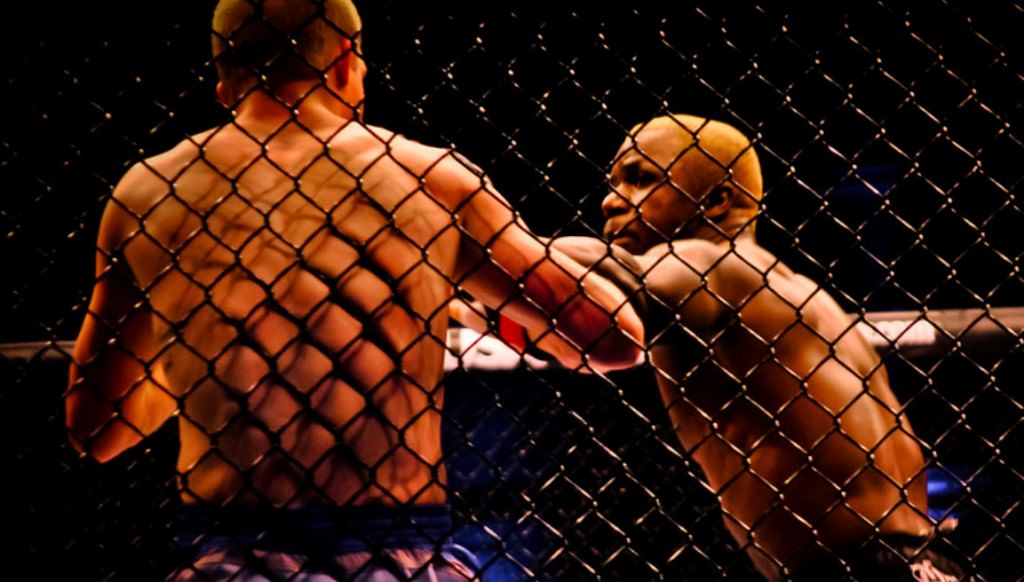
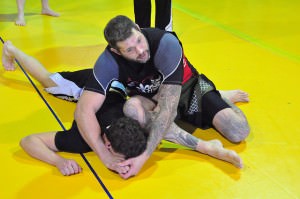
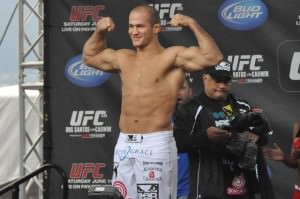
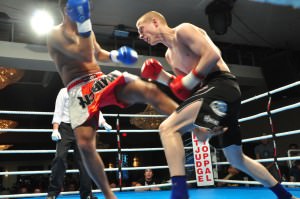


















Share the post "History & Revival of Mixed Martial Arts (MMA) in Today’s Sporting World"